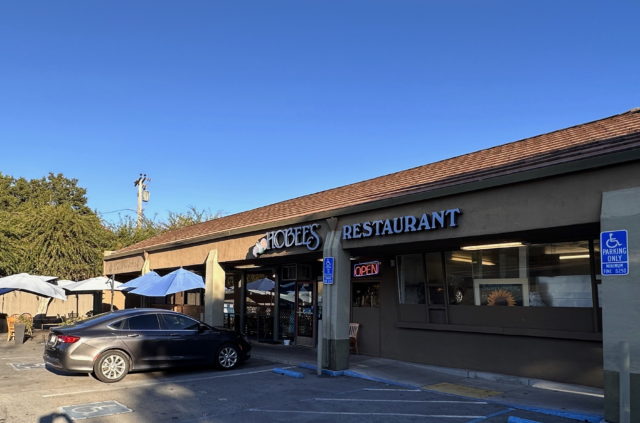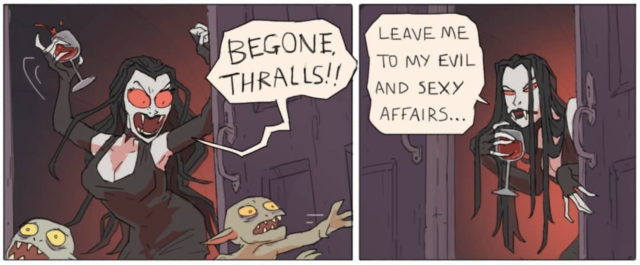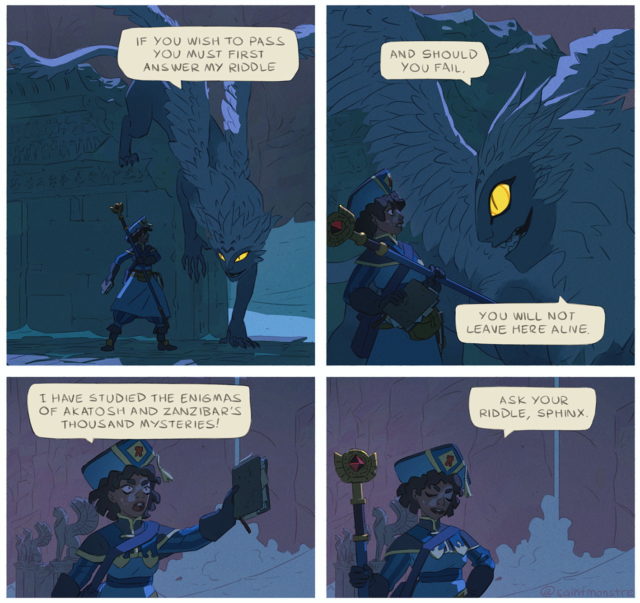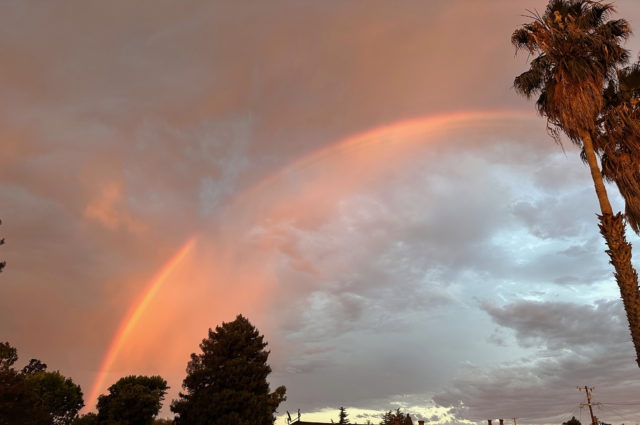This year feels like it’s been a big maintenance year, which isn’t a bad thing, and I feel like we got a lot of stuff done in that space this year.
A maintenance year doesn’t sound very exciting, but the biggest piece of maintenance was in fact quite exciting: Finishing the almost-2-year-long renovation of our vacation home on the east coast. We were fortunate to have a fantastic contractor who worked closely with us from a continent away to get it done, and it turned out amazing. We made 3 trips back there this year. First, in May to get things ready. Second, our big trip in July with friends, which started off with a 2-day delay and then was a lot of fun but was ridiculously busy, especially for me. And then again in September, just the two of us, which started off with a hurricane but ended up being a nice and mostly-relaxing trip.
We’re very glad to have it done, and are looking at spending time there regularly over the next few years. The cross-country fight is a bit of an oof, but we’ll figure it out.
In late summer I wrote that August was all by itself a month of maintenance, replacing our dishwasher, getting a major service on my car, and deep-cleaning the bathrooms and doing a bunch of yard work.
Fall is when the yard work ramps up anyway, as the sycamore tree in front of our house keeps me busy raking for a couple of months. The December storms knocked down almost all of its leaves so I think I finished a little early this year.
Early in the year we had some sections of our fence fall over, and we had them repaired (which mainly involved replacing the rotting posts), and then this fall we had them out again to replace several other posts. I feel like we get this done more often than I’d like, so maybe we should investigate getting treated lumber which won’t rot in the ground at some point.
In November I had another car repair, as my car – a 2015 VW Eos convertible – had been leaking in the rain, and it turns out it needed some drainage holes cleaned out. It was a little cheaper than estimated, and the rains we’ve gotten in the past month have shown that it worked, as it hasn’t leaked again. I am a little concerned that my discontinued-model car will be more expensive and difficult to maintain as time goes on – for more than just its age – so it might not last too many more years. We’ll see. (Long-time readers may recall that my previous car lasted 16 years, and the car before that I had for 9 even though it was 3 years old when I got it.)
We also had people out to clean the gutters and windows, which they really needed. We should probably do the gutters at least every other year, if not more. Once again, the storms this month validated the decision to do this.
In December we had an electrician come in to fix a bunch of lights in the kitchen. We have recessed lights all over the house, but while most of them are screw-in halogen flood lights (which I’ve been replacing with LED floods as they burn out), the six in the kitchen we push-in fluorescent lights, and the last two that died had the bases of the bulbs disintegrate when I tried to replace them. Apparently this is a common problem, so we got the whole fixtures replaced with built-in LED lights which will last 50,000 hours, probably meaning 20 years or more, which seems pretty good. We also got a pendant light over the island fixed, as well as an under-cabinet light. (And we might replace the fluorescent under-cabinet lights with LEDs at some point, as I replace those bulbs more often than any others in the house.)
I spent part of the holiday break cleaning up stuff in our study, tossing quite a few things, and I also have a couple of boxes of books to try to sell to the one remaining used book store in the area. I even made enough space on the shelves to empty one of the two remaining boxes from our move 12 years ago.
This year I struggled with plantar fasciitis and a strained achilles tendon, resulting in my taking most of September off from running. The fasciitis was by far the most annoying of the two, but it seems to have gone away this winter, which suspects that I need to find better summer footwear. The strained achilles has been naggingly annoying but no more than that. It’s gotten better too, but isn’t 100%. All part of being overweight and getting older, I guess.
I read about a book every other week this year, which may not sound like much but I maxed out at a little more than a book a week back in the 90s, and these days I read a lot more stuff than novels and comics. I’m still plugging my way through Steven Brust’s Vlad Taltos series as my before-bed reading, and will probably be ready to write a second entry about it soon. I decided to find alternate places to record my reading other than GoodReads (an Amazon site), so you can find me at The Storygraph and the SFBA Bookwyrm instance, if you care.
I’ve also continued to listen to lots of podcasts, at the rate of something like an hour and a half a day, mostly driving to and from work or going out walking or running. I keep up-to-date on many podcasts, but I have a large backlog where I am almost up to the end of 2020. Sheesh!
One thing that’s been receding in my life is Magic the Gathering. I mostly play limited Magic – draft and sealed – rather than constructed, and frankly this has been the worst year for limited Magic that I can recall. 4 of the 5 drafts formats were ridiculously fast, and the other was also pretty fast, which I find pretty tedious because it’s so easy to fall behind and so hard to catch up if you do. Moreover, I think fast formats reward people who are good at drafting and deckbuilding, and I think my strength is in playing the games, while my drafting is mediocre and my deckbuilding is weak. I lost games at a 75% clip during Wilds of Eldraine, and was miserable doing so; it’s my least-favorite draft format ever. So I think I’m going to step back from it for a while, and when new sets come out wait to see if the consensus is that the format is fast. If it is, then I’ll probably skip it.
Instead, back in September I picked up Marvel Snap again. It’s a short-game format collectible card game on iOS which didn’t hold my interest for long when I tried it in late 2022, but has been just what I needed as I stepped back from Magic. It’s probably worthy of its own post at some point, but it’s been making me happy. It probably helps that I’ve won at a pretty good rate, and with a few decks I built myself (though I’m certainly not too proud to netdeck).
I’ve basically stepped back entirely from Twitter/X (often styled derogatorily as ‘Xitter’, which I like the pronounce with the ‘X’ as an ‘Sh’) and its legion of fascists and white supremacists, starting with the chief Muskrat. I mostly post on Mastodon, and sometimes on Bluesky, though Bluesky feels like Twitter of 2012 in its technology so it’s hard to get too excited about posting there. Hopefully 2024 will see it ramping up its development efforts significantly.
On the home front, we’ve been continuing to integrate Domino into our lives. Debbi got his DNA tested and he’s primarily a pit bull mix, which I could see once I looked at several styles of pit bulls. He’s particularly got the pit bull torso, but he has his own unique features such as his curly tail and his helicopter ears.
Domino and the cats still don’t get along, especially D and Jackson (who is starting to look like an older cat as he just turned 11). He’s doing better with Simon and Edison, but we still keep them separated. I sometimes joke that the circle in our household is that Debbi wants to hang out with the dog, the dog wants to hang out with me (because he thinks I play harder, I think), I want to hang out with the cats, and the cats want to hang out with not-the-dog (though I think if he were chill around them then they’d be okay with him, especially Simon). This means that Debbi and I spend more time in separate rooms than we used to, which isn’t great, but it’s working so far.
So it’s been a pretty busy year, and I feel like we accomplished a lot, even if it wasn’t the most exciting year ever. But with the 2024 elections coming up, I am definitely feeling like I don’t want to live in interesting times!








